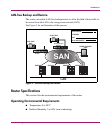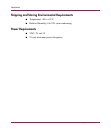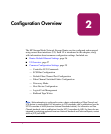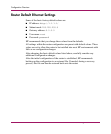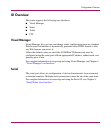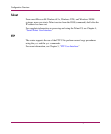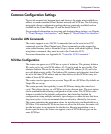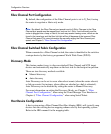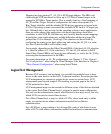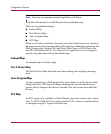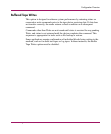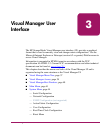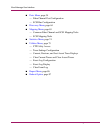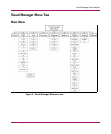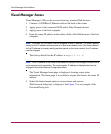
Configuration Overview
31Network Storage Router e1200-160
Mapping involves pairing FC_AL_PA to SCSI target address. The HBA will
claim enough SCSI bus entries to allow up to 125 Fibre Channel targets to be
mapped to SCSI Bus: Target entries. This is usually done by a fixed mapping of
AL_PA to Bus: Target. In such a configuration, the router corresponds to a
Bus: Target identifier, with the attached SCSI devices appearing as logical units
(LUNs). Operating systems can extend the available SCSI limit of 15 targets per
bus. Although this is not an issue for the operating system or most applications,
there are cases where older applications can have expectations about what
constitutes a valid SCSI ID, and thus may not correctly handle certain mappings.
In particular, some applications may exhibit difficulties addressing target IDs
greater than 15 (for example, 16 and up). This situation can be resolved by
configuring the router to use hard addressing and setting the AL_PA to a value
less then 16 that the HBA will be able to map.
For example, depending on the Fibre Channel HBA, if the hard AL_PA selection
is 1, then the address is 1. If the selection is 125, the AL_PA address is 0xEF.
Some Fibre Channel HBAs will map devices differently, so verify the AL_PA by
reviewing the documentation for the HBA.
For more information on AL_PA configuration, see Chapter 3, "Fibre Channel
Port Configuration," when using the Visual Manager User Interface or Chapter 4,
"Fibre Channel Configuration," when using Serial/Telnet.
Logical Unit Management
Because SAN resources can be shared, it is possible for multiple hosts to have
access to the same devices on the SAN. To prevent conflicts, the router provides
LUN management as a means to restrict device access to certain hosts. LUN
management goes beyond simple LUN masking, to prevent gaps in the list of
LUNs presented to a host.
LUN management maps can be created for different views of the devices attached
to the router. Each Fibre Channel host is assigned a specific map configuration.
Not only can the administrator control which devices a host may access, but also
which LUNs are used to access these devices.
For a Fibre Channel host, a map is a table of LUNs, where each entry is either
empty or contains device address information needed for host/device
communication.
For a SCSI host, a map contains a list of target IDs, each of which has its own
table of LUNs with address information needed for host/device communication.



